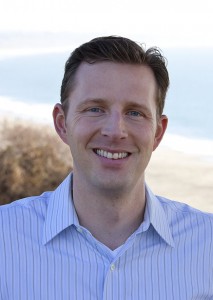Can Road Problems Be Fixed Through County Service Area (CSA) Formation?
Posted by Zack Friend on Mar 18, 2015

It’s hard to drive through Santa Cruz County and not see the effects of deferred maintenance on roads. Potholes, cracking, storm washouts and more are evident throughout. The County recently completed an analysis of our local roads to determine just how bad it is. On a scale of zero (a failed road) to 100 (new road) the average Pavement Condition Index (PCI) of Santa Cruz County roads is 55. This means that our roads are generally defined as being in “poor condition” by this measurement index. The deferred maintenance for Santa Cruz County roads is estimated to be approximately $180 million over the next five years. With state and federal funding for road repairs drastically cut over the last decade and local funding mechanisms unable to keep pace with the growing need (only 13 cents of our local property tax dollar comes back to Santa Cruz County) how do we address this problem?
One option is through expanding County Service Areas (CSAs). These are small neighborhood or rural roadway benefit assessment areas in unincorporated county areas that raise funds to build, maintain and repair roads specific to your neighborhood. The CSAs are self-initiated and are set up under Prop. 218 – which requires a mail ballot procedure and majority of the returned votes. This is a way to ensure that your specific local road is addressed.
Residents organize to form the service area and determine the benefit assessment rate that they wish to assess to finance a specific service, such as road maintenance. One of the major reasons to form a CSA is that it provides an effective mechanism to collect benefit assessments from all property owners in an area that would benefit. The annual benefit assessment appears on each parcel's property tax bill. Your street (or a neighborhood) could form together to ensure that your road needs are met.
How do you start a CSA in Santa Cruz County?
1. An application and petition is obtained from (and submitted to) the Local Agency Formation Commission (LAFCO). Generally, it is recommended that at least 2/3 of the affected property owners desire the formation of the service area to ensure broad support.
2. County Public Works researches the area and prepares a map and legal description of the proposed service area.
3. The map, description, application, and initial deposit are submitted to LAFCO. LAFCO reviews the proposed boundaries of the CSA to determine that all parcels that will benefit from the CSA are included and any that won't benefit are excluded. LAFCO will advertise and hold a public hearing to determine the final CSA boundary.
4. Public Works submits the LAFCO-approved boundary to the Santa Cruz County Board of Supervisors. The Board will hold a public hearing on the formation and after the hearing the service area is approved or the process terminated. Concurrent with the CSA formation, Public Works will request the Board of Supervisors to initiate the benefit assessment rate proceedings in accordance with Proposition 218 ballot proceedings. In other words, a mailed ballot will be sent to the affected property owners to set the initial rate and formation.
5. Public Works submits the map and description as approved by the County Board of Supervisors to LAFCO for the State Board of Equalization (SBE) and LAFCO records the service area. After filing with the SBE, the formation process is complete.
Once a year, the CSA must hold a meeting to establish benefit assessment rates and a work program. Based on the property owner’s wishes, the Board of Supervisors then sets the rates and approves an annual budget for the CSA. The benefit assessments are collected on the regular property tax bill in December and April each year.
While no one likes the idea of additional property taxes, one key advantage of this process is that these taxes stay in your neighborhood or even your street (depending upon size of the CSA). In other words, your assessment will specifically lead to the repair and maintenance of your own road and/or neighborhood roads. Additional local control (through your own CSA board) helps ensure funds are spent on what residents want them spent on. Questions? My office would be happy to discuss more about how this process works in Santa Cruz County. Give us a call at 831-454-2200.
Back to all Blogs
